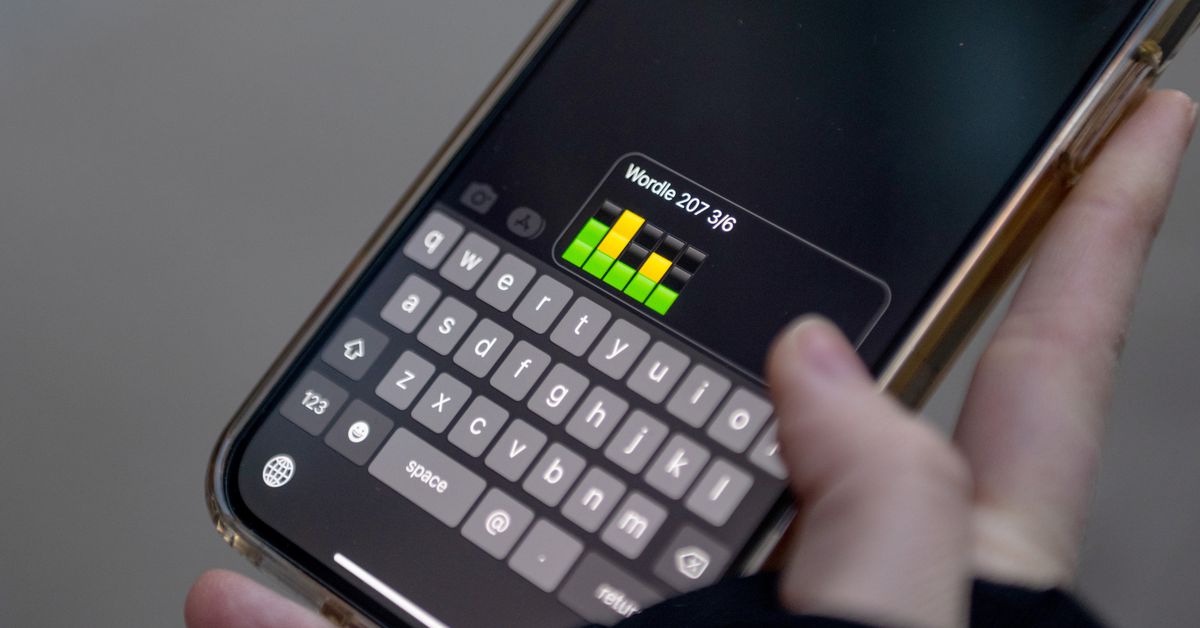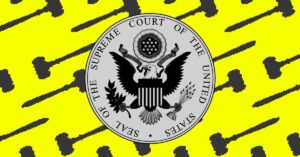
Did you struggle with Wordle today? I sure as hell did, racking up my second ever failure since I started playing the game at the beginning of the year. I was annoyed at myself more than the puzzle and eased that frustration by sharing my results on Twitter.
As I did, I realized why the game’s auto-generated grids of emoji are so brilliant. It’s not just that they’re social (though that certainly helps), nor is it that they’re intriguing (there’s no link to the game and no explanation for the uninitiated as to what the emoji mean). No, it’s because each grid tells a story with wonderful concision. With just 30 squares and three colors, Wordle’s emoji results convey narratives of luck, frustration, perseverance, and failure; each grid a miniature story, like a landscape painted in a matchbox.
Okay, okay, I get it — this sounds a little over the top! But take a look below at my failed result from today. You can see I get off to a good start, scoring two correct letters in the correct positions immediately. Then I try again, and, okay, I don’t get any more hits, but I’ve still got that solid foundation. Another try: nada. Two more: still nothing! Then the sixth and final guess, annnnd crash: I fail completely, those two unbroken lines of green emoji forming a comedic anticlimax, like a pair of skidmarks disappearing over the edge of a cliff.
At least, that’s how I see it. In my head.
had an absolute mare
Wordle 208 X/6⬜⬜ ⬜
⬜⬜ ⬜
⬜⬜ ⬜
⬜⬜ ⬜
⬜⬜ ⬜
⬜⬜ ⬜— James Vincent (@jjvincent) January 13, 2022
To rationalize this a bit more, I think Wordle’s emoji results work particularly well as story-telling devices for two reasons. The first is that they’re chronological. Like panels in a cartoon, you read the emoji as a narrative, each line — each guess — building on the one before. Unlike a video game high score or a finished crossword puzzle, these aren’t just trophies of skill but replays of the entire game. You know that if someone got all green on their second guess, then their win was more luck than skill. But if you see them battling through grey and yellow squares down to the sixth line, you know that win took guts.
The second reason is that each grid is something of a roman à clef. By this, I mean that if you’ve played the game in question, you’ll recognize what letters the player got right and wrong, allowing you to flesh out the story in your head (and perhaps compare it to your own). That’s where the social element comes back again (as well as Wordle’s puzzle-a-day mechanic): it encourages you to play the game yourself and so better decipher your friends’ results.
The only downside of this system is that the results — like all emoji — are not particularly friendly to people using a screen reader. Instead of offering a visual snapshot, they become a robotic dirge of [Green square] [Three wide large square] [Yellow square] and so on, like a tar pit of emoji description. (The best way around this, I’ve learned only recently, is to take a screenshot of the results and then add a description to the alt text.)
Of course, the popularity of Wordle is more or less guaranteed to flame out any day now. And when that happens, all those grids of emoji will return to their natural, mute state; no longer signifying stories of grit and triumph but becoming once more, just colored squares. It’s the only proper ending to viral fame: all those moments lost, like emoji in the timeline.





